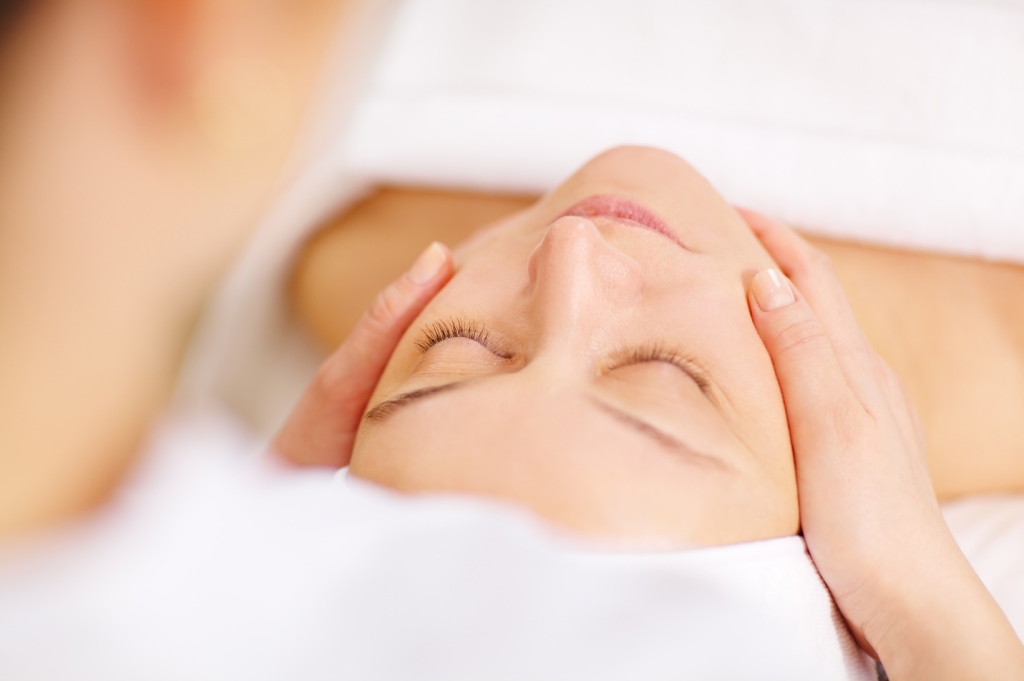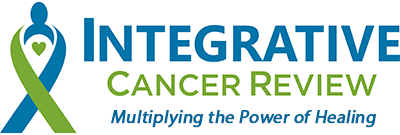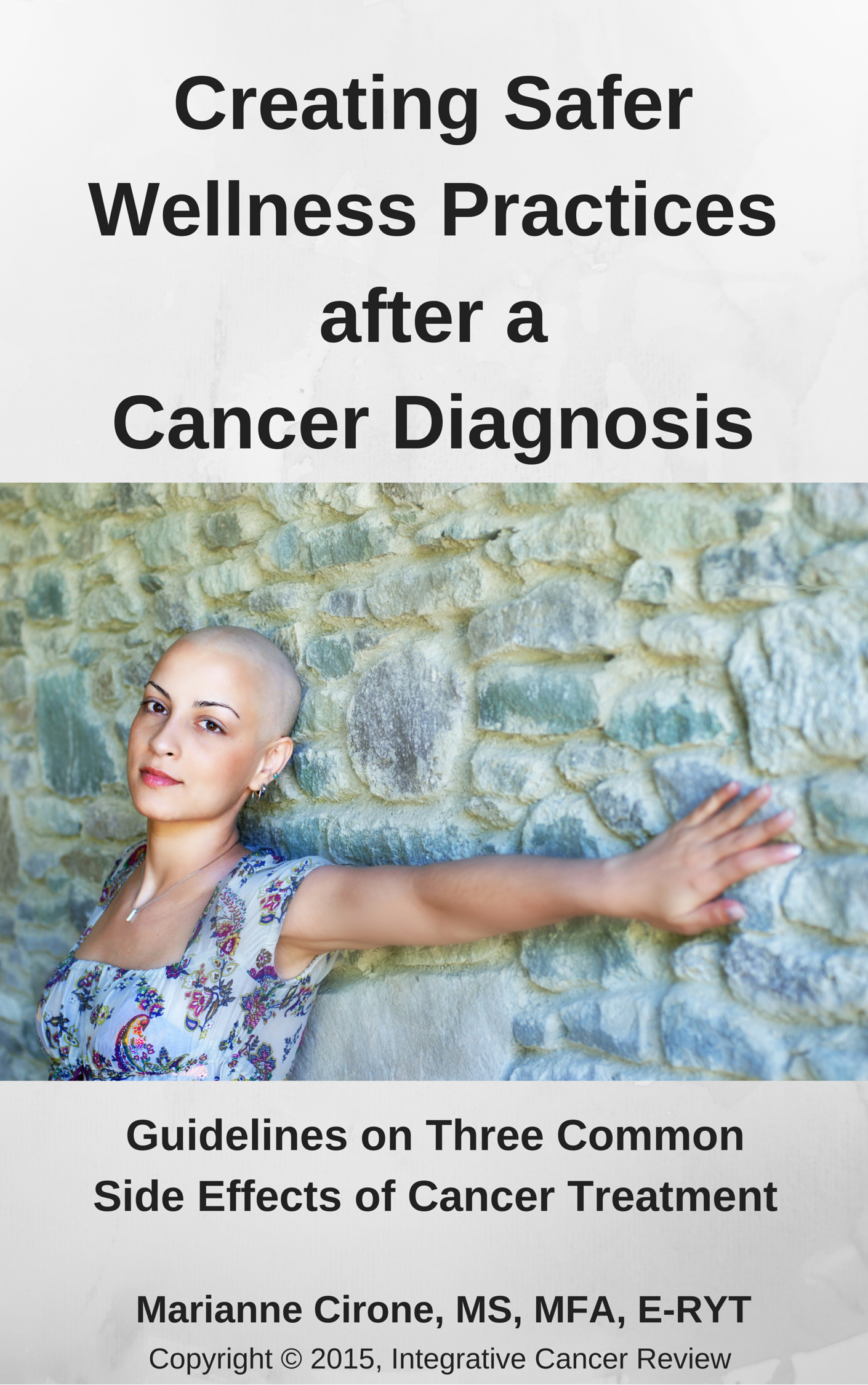
Cancer-Focused Skin Care Routines
“I had just finished chemotherapy treatments for lymphoma and my skin was red and inflamed. I was lucky to find an oncology-trained esthetician who gave me the right products and skin treatment. Within a few days, my skin had calmed down and I looked and felt so much better.”
— Christine, age 57
Having regular skin care treatments can feel like a real life saver to a person who is going through or who has gone through treatment for cancer. Geralyn O’Brien, a two-time cancer survivor and a licensed esthetician with several advanced certifications in oncology skin care, understands the importance of including the mind, body and soul in the healing process. Geralyn works at two cancer resource centers where she provides facials and she also trains other estheticians on oncology-related modifications. Clients dealing with cancer receive facials that are completely individualized based on diagnosis, treatment progression and the side effects associated with their medications and treatments. Geralyn helps clients overcome the skin-related side effects of cancer treatment and educates them on the “new normal” for their skin care.
Geralyn stresses that estheticians do not treat or diagnose skin conditions–so first and foremost, individuals should address skin concerns with their physicians and then she can help them with product selection and skin care procedures.
Skin Care During and After Cancer Treatment
Geralyn says that cancer treatment can cause a variety of changes in the skin including dryness, dehydration, redness, rashes and chemo-induced acne. In addition, some women may experience early menopause due to chemotherapy, surgery or other medical treatments, leading to thinning of the skin and loss of elasticity. Sun damage and hyperpigmentation (brown spots) may also appear during or after treatment.
Proper skin care from the start of treatment can help prevent or lessen some of these changes. Geralyn stresses the advantages of monthly facials during treatment. Some of the benefits include increased circulation, improvement of dry and dehydrated skin, calm and sooth red, irritated skin. Gentle exfoliation with products suitable to the cancer patient can be included to remove dead skin cells and stimulate cell renewal, bringing a healthy glow to dull skin.
However, Geralyn explains that the benefits of a facial do go beyond the physical, including the benefits of providing healing touch, encouraging relaxation and helping the client to feel pampered. She also points out that the gentle massage that can accompany an oncology-focused facial can be a great stress reducer, since the first place that stress shows up is often in our face.
Finding Safe Skin Care Products
Skin care involves more than just taking care of the face, according to Geralyn. “As an esthetician working with oncology patients, it is important to evaluate everything in our clients’ current skin care routines that they are using from head to toe. We can then direct them to safer product choices.”
Skin, the largest organ in the body, is our protective barrier and first line of defense against bacteria and viruses entering the body. The Environmental Working Group (EWG), estimates that the average person uses between 9 and 15 products a day, exposing us to hundreds of chemicals, many of which are potentially harmful. These products include those beyond the ones that we use on our skin, but also the many household products we use, such as detergents and other products. The Environmental Working Group offers a rating system based on the safety of the ingredients in over 80,000 products. Check out their product safety ratings at EWG’s Skin Deep Database, which also has a convenient mobile app.
“In the USA, we have only banned about ten unsafe ingredients, while the European Union has banned over a thousand unsafe ingredients. While it is impossible to remove every toxic chemical in our lives, we can replace many with fewer simpler and safer products,” says Geralyn.
“Many people believe that if a product says natural or organic, it is perfectly safe. Essential oils which are highly concentrated, and some herbs and plants can also be too irritating or stimulating to use on fragile skin, especially during cancer treatments,” explains Geralyn. “We recommend certain over the counter and professional lines, but we will identify which products from these lines fall under the safety factor for the oncology patient. Think: more calming, soothing (anti-inflammatory), moisturizing and hydrating. And don’t forget your sun protection!”
Finding the Right Skin Care Professionals
Similar to the recommendations for massage therapists who serve people who have been diagnosed with cancer, estheticians also need to receive oncology-focused training in order to best serve clients affected by cancer. Estheticians need to be familiar with the many potential side effects and conditions associated with cancer and cancer treatment, and know how to safely modify when needed. The International Society of Oncology Estheticians is one organization that helps to maintain high standards for estheticians offering services to cancer patients and survivors and provides a directory of oncology-trained estheticians.
Suggested Reading
For more information on skin care during and after cancer treatment, Geralyn O’Brien recommends the following resources:
- Skin Care Guide for People Living With Cancer by Dr. Mario Lacouture
- When Cancer Hits by Britta Aragon
- Understanding Dermatological Reactions, a free cancer resource guide from PatientResource.com
These three books are also good general skin care and product references:
- Healthy Beauty by Dr. Samuel S. Epstein
- No More Dirty Looks by Siobhan O’Connor and Alexandra Spunt
- Not Just a Pretty Face. . . the Ugly Side of the Beauty Industry by Stacy Malkan
About Geralyn O’Brien
Geralyn O’Brien is a licensed esthetician who specializes in oncology-focused skincare. As a two-time breast cancer survivor, Geralyn saw firsthand the effects that cancer, chemotherapy and other medical treatments had on the skin, including the appearance of aging. Spending many years supporting other breast cancer patients as a Reach to Recovery volunteer with American Cancer Society, she found that cancer patients lacked knowledge about the impact of cancer treatment and how to safely address concerns. Hoping to fill this gap, she completed her Esthetician training with Dr. Natalie Doran at International Skin Beauty Academy in Schaumburg, Illinois. In addition, Geralyn took several oncology-focused esthetics training programs to expand her knowledge base.
In 2011, Geralyn started the oncology skincare program at LivingWell Cancer Resource Center in Geneva, Illinois, serving as Lead Esthetician, creating protocols for the entire esthetics team. In 2016, Geralyn launched the skincare program at Waterford Place Cancer Resource Center in Aurora, Illinois. In 2018, it was there that she helped to design and implement a pilot program called “Simply Beautiful” which educates women on safe skincare, makeup and hair loss while enhancing each women’s natural beauty.
Along with providing oncology facials and skincare consultations at Waterford Place, Geralyn helps organize spa days and teaches fun interactive classes for cancer patients. She is also an Ambassador with Oncology Spa Solutions where she helps to bring oncology awareness to local esthetic schools and estheticians in Illinois and serves as a contributor to the Integrative Cancer Review online journal.
Geralyn is passionate about helping others cope with the physical, emotional and financial effects of cancer. It is her philosophy that ongoing education and mentorship will continue to bring much needed awareness to important aspects of cancer care that too many people go without. Geralyn works to empower those impacted by cancer and continues to advocate on their behalf. She says healing is a journey and she constantly sees the benefits that wellness programs provide to cancer patients and their families.
See more on Oncology Skin Care:
- Tips for Preparing for a Mastectomy and Other Surgeries
- Jojoba, Safe Skin Products and Cancer Care
- Training Skin Care Professionals to Work with Cancer Patients
- 2017 Breast Cancer Rehabilitation and Wellness Summit – FREE Access to 45 International Expert Speakers
- Keys to Healthy Skin for the Oncology Patient and an Interview with Gregory Maguire, Ph.D., Founder of NeoGenesis™
- Looking and Feeling FAB, Inc: Changing Lives with Skin Care for Cancer Patients
- CamWell Oncology-Specific Products to Support Skin Care for Cancer Patients
- Safer Skin Products for Cancer Care: Spotlight with Britta Aragon, Author and Founder of CV Skinlabs™
- An Oncology-Trained Esthetician’s Skin Care Tips: During and After Cancer Treatment
- Jojoba and The Cancer Patient: Essential Facts for Glowing Skin with Geralyn O’Brien


















